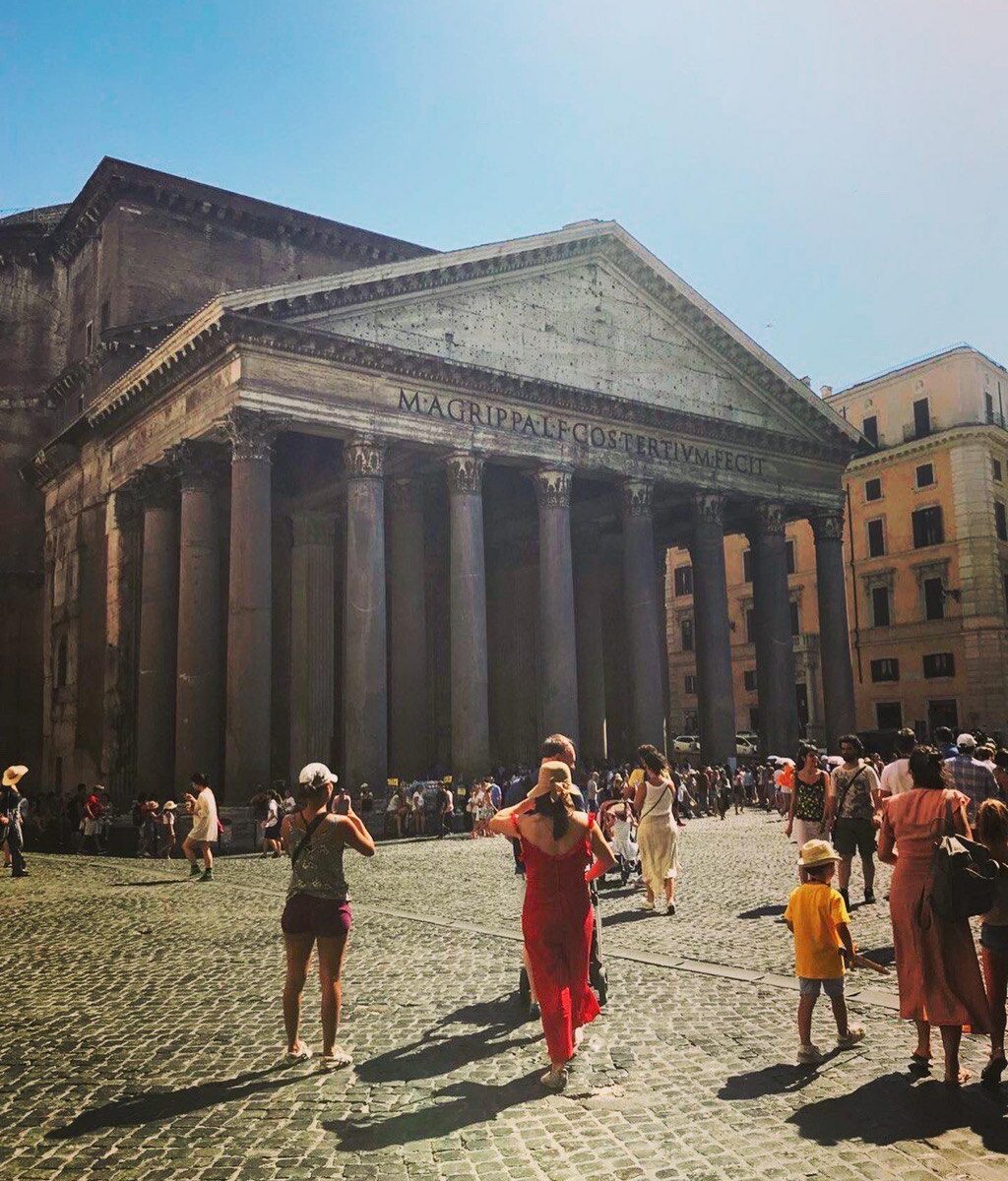
Italian philosophy of life in contrasts (p. 14): Temple of All Gods
The amazing structure imbued with the spirit of ancient Rome is located in the heart of Piazza della Rotonda. The modern Pantheon in Rome was built in the 2nd century AD and later consecrated as a Catholic church. The ancient temple was dedicated to the Roman Gods, celebrating the grandeur of the Roman Empire.
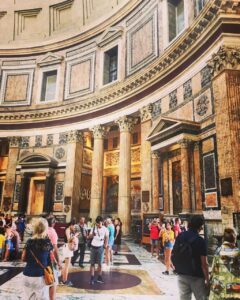
The first Temple of All Gods (translated from Greek) was constructed in the 27th century BCE by Marcus Agrippa. The building resembled a conical Etruscan sanctuary and parallelepiped. Such structures had not existed in Rome before. After a destructive fire in 80 AD, the Temple was not merely restored but almost entirely rebuilt by the order of Emperor Hadrian.
Externally, the temple appears as a large cylindrical building with an imposing portico. The portico features a covered rectangular line of 16 columns, with 8 at the front and two rows of 4 columns on each side. The colonnade supports a triangular pediment.

The temple is faced with marble, and its walls, 6 meters thick, stand on a sturdy foundation. A hemispherical dome covers the rotunda, evenly distributing the weight of 5,000 tons onto the walls. The diameter of the dome, like the height of the temple, is 43.5 meters. For the longevity of the dome, materials were chosen for their strength in combination with concrete. There are no windows in the Pantheon. The only opening, called the Oculus, is in the center of the dome with a diameter of 9 meters. It acts like a divine all-seeing eye, allowing light into the temple, symbolizing the unity of humans as God’s creation with the heavens. Light represents the omnipotent force controlling rulers from above and maintaining order on Earth.
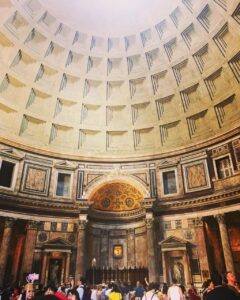
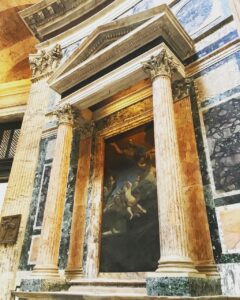
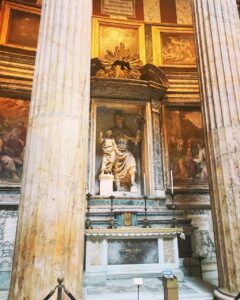
Below the Oculus stands an altar, and statues of Gods used to be placed around the walls. As light penetrates the temple, it not only helped to determine the time of day but also illuminated each God statue in turn, showing honor and attention to each. It was believed that inside the temple, the earthly and heavenly worlds converged.
Upon entering the Pantheon, it’s impossible to take in the entire interior due to the magnificence of the structure. The atmosphere inside exudes a sense of lightness and tranquility, as if in another world. The original walls and floor, adorned with colorful marble geometric figures, captivate with their grandeur. Frescoed niches in the walls hold sculptures of Marcus Agrippa, Octavian Augustus, Julius Caesar, seemingly observing the common citizens.

Above, on the second level, hangs an icon of the Virgin Mary. According to tradition, every year on Trinity Sunday, rose petals are scattered through the Oculus onto the marble floor. This ritual symbolizes the descent of the Holy Spirit upon the apostles.
During the Renaissance, the Pantheon became a mausoleum for many famous individuals and saints. Umberto I, Emanuele II, and even the unmatched Raffaello Santi with his bride Maria Bibbiena are buried here.
The Pantheon is a wonder of the ancient world and an embodiment of the grandeur of the Roman Empire.
“Angels, not humans, created it…”









